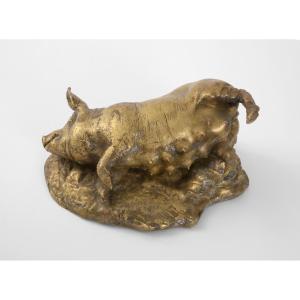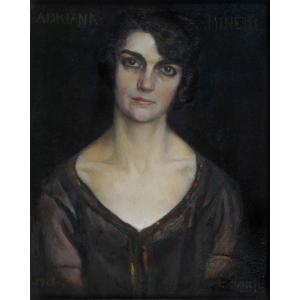Signed on the base: "Vicenzo Jerace Roma"
Provenance: private collection
Vincenzo Jerace was born in Polistena, near Reggio Calabria, in 1862. He immediately specialised in sculpture, preferring a verist style and above all decorative themes in the animalier genre.
During the 1980s, his production inevitably spilled over into the applied arts, especially when he devoted himself to the elaboration of decorative animals.
During a stay in London, he came face to face with the Symbolist and Pre-Raphaelite language and began to work in particular on the arcane and unusual forms of radiolarias, protozoa that are perfectly suited to Art Nouveau decoration for vases, railings or handrails.
Towards the end of the century, the sculptor's success reached its peak, crowned by his presence at the 1895 Venice Biennale with Fauna, Radiolaria, four sanguine drawings and a bronze Piglet, which he exhibited again at the 1896 Exhibition of Amateurs and Culturists in Rome and at the 1898 St. Petersburg exhibition. A playful and tender sculpture, executed by Jerace in several variants, including one in gilded bronze, it has been read as a 'masterpiece of humour' on which 'Fremiet himself would put his name'.




























 Le Magazine de PROANTIC
Le Magazine de PROANTIC TRÉSORS Magazine
TRÉSORS Magazine Rivista Artiquariato
Rivista Artiquariato